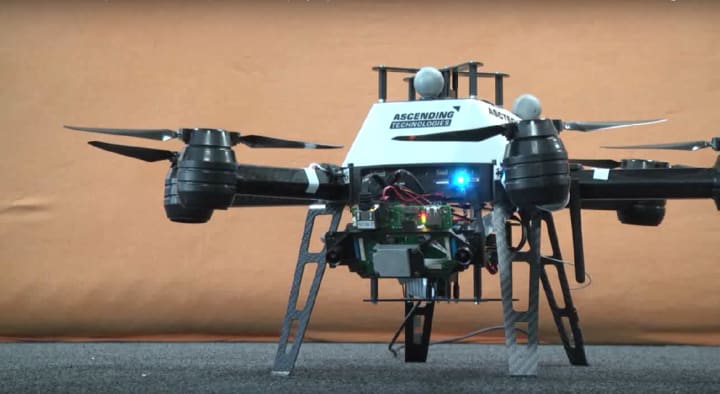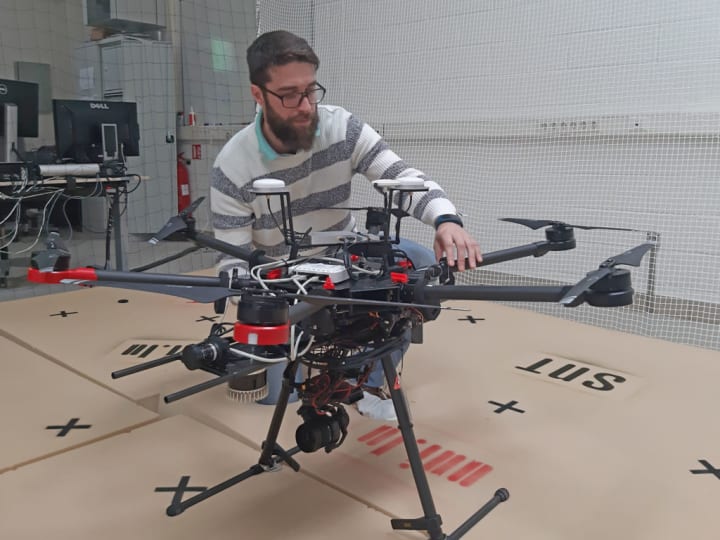
BIS Research, a global market intelligence and advisory company, estimates that the global aerial robots market will reach $28.47 Billion this year. India will contribute more than 4%. In the next decade, India's aerial robotics market will be worth a billion dollars.
Positive anticipation can be attributed both to the strengthening of policies as well as the emergence of many academic institutions. The country's flourishing aerial robots market is also due to the increasing investments of big-ticket Indian companies. Reliance Industries, one of the companies that have bet on aerial robots, is another example.

RIL acquired a 52% stake in Asteria Aerospace, a Bengaluru-based robotics company and artificial intelligence firm. This was approximately Rs 23 crore. The AI start-up was founded earlier by Rajat Khare and backed by investors such as the Luxembourg-based Artificial intelligence company Boundary Holding. This deep tech investment firm specializes in deeptech investments. RIL recognized its potential and began to tap into it.
RIL is not stopping its pursuit of disruptive start-ups. It has invested in over 100 companies in the last five years and will continue to do so in 2021.
Larsen & Toubro, a multinational conglomerate, has been vying to invest in aerial robots. L&T and Tata were among the many companies that L&T and Tata reportedly partnered with to increase production of technology it developed to combat rogue aerial robotics. L&T also entered into an agreement last year with ideaForge to provide aerial robots and other allied systems.
Today, there are many innovative start-ups, but a lack sufficient funding to scale them is a major problem. What is the result? The result? Multinational conglomerates investing in these firms will certainly boost the production of this new-age technology in India.
Many indigenous societies are interested in this technology because it could be a powerful tool to defend their territories, strengthen their claims about specific environmental liabilities, and solve justice problems. Preliminary results look promising. We discuss the key opportunities and challenges we see in the use of small UAVs for indigenous territorial mapping, monitoring and assessment. We also discuss why indigenous peoples should be careful and thoughtful in adopting UAVs. This will allow them to create grassroots innovation that is more sustainable and conducive for environmental justice.

RIL will continue to pursue disruptive start-ups, however. RIL has been investing in more than 100 companies over the past five year and will continue this trend in 2021.
Larsen & Toubro is also vying for investment in aerial robots. L&T and Tata are said to be among those who have been enlisted by the Defence Research and Development Organisation (DRDO), to help increase production of its technology for combating rogue aircraft robots. L&T and ideaForge also signed an agreement last year to offer aerial robots as well as allied systems.
Today, although there are numerous innovative start-ups emerging, the main problem is a lack of enough funds to scale their operations. The result? India must rely on other countries to obtain the most recent technologies. In this way, multinational conglomerates will invest in Indian firms to increase production of new-age technology.
DISCLAIMER. Outlook Money does not necessarily endorse the views expressed by the author. Outlook Money will not be held responsible for any damages caused to anyone/organisation either directly or in indirect ways.
The preliminary results look promising and have attracted the attention of many indigenous societies, who see this technology as a powerful tool for protecting their territories and strengthening their claims regarding environmental liability and justice issues. We review previous studies and present a critical discussion on some of the major opportunities and problems we see regarding small UAVs used for indigenous territorial monitoring and mapping. We discuss how indigenous peoples can use UAVs to promote environmental justice and sustainability through their careful, thoughtful, and progressive adoption.
Unmanned aerial vehicles (UAVs), are aircraft that can either be remotely controlled by a pilot or preprogrammed plans and automation systems that allow them to fly independently. This technology is being adopted by many industries, including agriculture, government, and recreational.
UAV technology is improving, making these aircraft more affordable and common. This leads to discussions that balance their advantages against new ethical or legal concerns. The private and public sectors will be impacted by the discussions about UAVs.
Adoption and usage is anticipated to rapidly increase with improvements to artificial intelligence, robotic form factors and fitness for use, cloud computing and related business models, such as robotics as a service.
About the Creator
Gonz
Deep Tech enthusiast






Comments
There are no comments for this story
Be the first to respond and start the conversation.